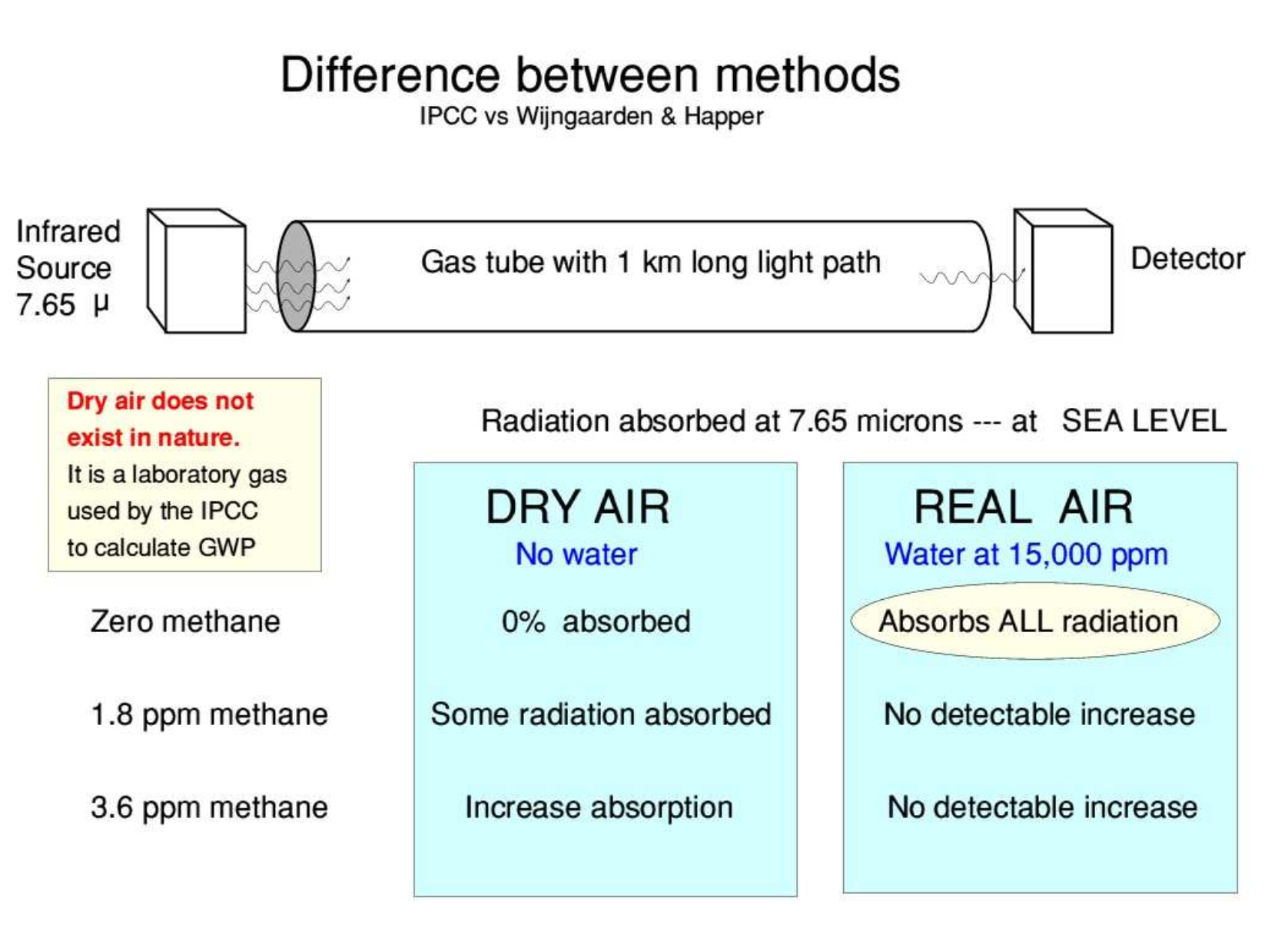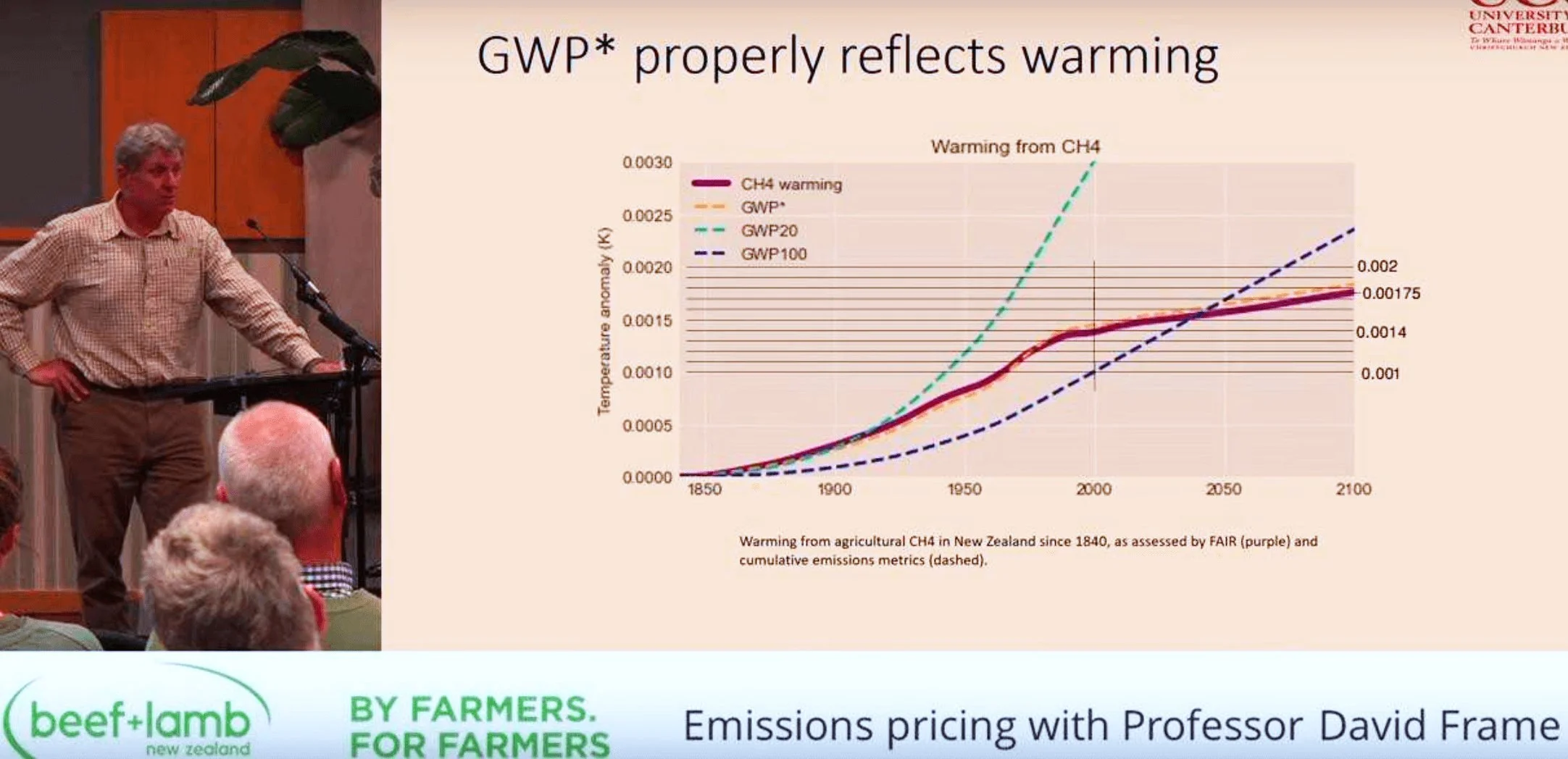The Science of Methane
The IPCC said
“expressing methane emissions as CO2 equivalent of 28, overstates the effect on global surface temperature by a factor of 3-4”.
IPCC AR6 p1016, Chapter 7, of the Working Group 1, “The Physical Science Report’’
Professor David Frame calculated that;
The warming caused by NZ livestock from 1850 to 2000 was 0.0014°C with projected future warming of 0.0004°C between 2000 and 2100 - That amounts to 4 millionths of a degree/year. inconsequential, insignificant an utterly irrelevant.
Kevin Trenberth said
14/12/2023 at 9:48 amThis is NOT scientifically sound. It appears to assume that the methane emissions from dairy and meat count, but they do not because they come from carbon dioxide that was already in the atmosphere and was taken up by grass in photosynthesis. Any methane decays on a decade timescale back to carbon dioxide. It is circular. Methane is so short-lived it equilibrates and no extra warming results provided numbers of stock don’t change. We do need to decrease emissions but that means fossil fuels.
Kevin Trenberth (a Kiwi) was a senior scientist with NCAR (US National Centre for Atmospheric Research). He has been a giant on the IPCC scene since the beginning and has strong links to HadCRU (Hadley Climate Research Unit, East Anglia University)
David Coe et al 2021 said;
The contribution of CH4 and N2O is minuscule. Not only have they contributed a mere 0.3 °C to current earth temperatures, their climate sensitivities to a doubling of their present atmospheric concentrations are 0.06 and 0.08 °C respectively.
van Wijngaarden & Happer 2020 showed that
The effect of methane was minuscule because water absorbed the same wavelengths of infrared as methane and nitrous oxide. Water being more numerous by a factor of over 8000 times means that water absorbed over 99.988% of the radiation in that wave band.
Clearly the science is not settled
Hence, NO punitive actions should be taken by any industry body or government until it is settled
The Error
When the IPCC calculated its Global Warming Potential, it analysed the effect of these gases in isolation, that is in air devoid of water. The effect of water absorbing the same wavelengths of infrared was ignored. The methodology was wrong, therefore the outcome was wrong.
This is summarised in the chart
Science Summary prepared by Peter Foster, for The Methane Science AccordSummary of Greenhouse gases science and Methane’s role
• The surface of the Earth radiates photons of infrared at a range of wavelengths determined by its temperature.
• Greenhouse gases (*GHGs) are molecules that can absorb some wavelengths of this radiation.
The main GHGs are water vapour, about 15,000 ppm , 1.5%, of the atmosphere, CO2, 410 ppm, 0.04%,
Methane, 1.9 ppm, 0.00019%, and Nitrous Oxide 0.3 ppm, 0.00003%. Atmospheric gases which are not
GHGs, are Nitrogen, 781,000 ppm, 78.1%. Oxygen, 211,000 ppm, 21.1% and Argon 9,000 ppm, or 0.9%.
• That photon of energy, once absorbed by a GHG, is transferred to oxygen or nitrogen within a billionth of a second by collision, or by radiating the energy to another GHG. This is how the atmosphere is warmed by GHGs.
• The GHG can also be re-energised by collision with non GHG molecules.
• The exchange of energy between GHGs and non GHGs continues up through the atmosphere mainly by convection (hot air rises) until a height is reached where some radiation can escape to space - (emissions height).
• Above this height, loss of energy to space increases.
• At the surface, the concentration of GHGs is such that all the radiation that can be absorbed, is absorbed, within the first metre or two of the surface.
• For radiation at 7.65 microns (peak absorption for methane) the average path length of a photon before hitting a water molecule is 4 mm, for methane it is 250 m making methane pretty irrelevant. This difference is due to the concentration of these molecules, Water is 15000 ppm while methane is only 1.8 ppm.
• Water absorbs the same wavelengths of infrared as methane but due to its concentration it absorbs 99.988% of that radiation. Methane is irrelevant.
• About half the worlds methane comes from human sources. Ruminants are only ~10% of that NZ ruminants about 1/100th of that.
Professor David Frame accepts the above but claims that the effect of methane is at the emissions height rather than the surface due to water being frozen out at higher altitudes.
Fact: at 8 km up, there are still 400 ppm water which is still enough to totally swamp methane at 1.8 ppm. That reduces the absorption by water to 99.6%. methane is still irrelevant.
Fact 2: the band of infrared radiated is temperature dependent. At the surface temperature of 15 °C a wavelength of 7.65 is on the shoulder, but at 10 km up at -50°C the infrared band has moved to longer wavelengths and there is very little energy radiated at 7.65. So virtually nothing there for methane to absorb or radiate. On both accounts methane remains irrelevant.
David Frame has refused to comment on this, if it were not true he would have said so.
Frame used this graph to tell farmers that they caused warming and should pay their share. When asked why he did not point out the insignificance of this warming he responded saying everyone has to do their bit. Clearly this is a political response not a scientific one.

